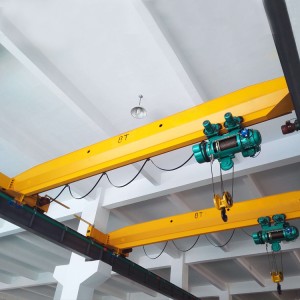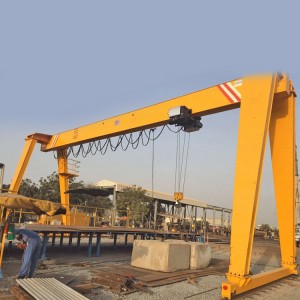Overhead cranes and gantry cranes are both types of cranes used for lifting and moving heavy loads in industrial settings. While they share similarities, they differ in terms of structure, mobility, and usage. Here's a breakdown of the main differences between overhead cranes and gantry cranes:
Structure and Placement
- Overhead Crane: An overhead crane, also known as a bridge crane, is typically installed on elevated runways or rails that are mounted on the walls or columns of a building. It consists of a horizontal bridge beam that spans the width of the working area and moves along the rails. The lifting mechanism, such as a hoist or trolley, is suspended from the bridge.
- Gantry Crane: A gantry crane is a free-standing structure with two vertical legs or columns supporting a horizontal beam. It is placed on the ground or floor and can move along rails or wheels. Gantry cranes are commonly used in outdoor applications, such as shipyards or construction sites, where overhead support is not available.
Mobility
- Overhead Crane: Overhead cranes are designed for linear movement along the rails installed in a specific area. They can move horizontally along the bridge and vertically to lift and lower loads. Some overhead cranes may have limited lateral movement using a trolley mechanism.
- Gantry Crane: Gantry cranes are versatile and offer greater mobility. They can travel along rails or wheels, allowing them to cover a larger area compared to overhead cranes. Gantry cranes can move in all directions: horizontally along the runway, vertically for lifting and lowering loads, and laterally across the working area.
Usage and Applications
- Overhead Crane: Overhead cranes are commonly used in indoor industrial environments, such as manufacturing plants, warehouses, and assembly lines. They are suitable for lifting and moving heavy loads in a fixed area, providing precise control and efficient material handling.
- Gantry Crane: Gantry cranes are more flexible and adaptable to different environments. They are often employed in outdoor applications, such as construction sites, shipping yards, and ports, where heavy loads need to be moved over a large area. Gantry cranes are particularly useful for loading and unloading cargo from ships or transporting materials in open spaces.
Load Capacity
- Overhead Crane: Overhead cranes are designed to handle heavy loads, ranging from a few tons to several hundred tons. They are commonly used for lifting and moving large machinery, equipment, and containers.
- Gantry Crane: Gantry cranes can also handle heavy loads, although their load capacity may vary depending on the specific design and configuration. They are available in various sizes and can be customized to meet specific lifting requirements.
It's important to note that there can be variations and hybrid designs that incorporate features of both types, blurring the line between overhead cranes and gantry cranes. The choice between the two depends on factors such as the working environment, load requirements, available space, and specific application needs.
 |
 |
Post time: Dec-08-2023




